STREAM RESTORATION
RESTORING WATERWAYS TO THEIR NATURAL STATE
With more than 30 years of experience, Flyway Excavating is an experienced stream restoration and excavation team, ready to handle any stream restoration project that comes our way. Our dedicated work ethic combined with an unswerving commitment to the environment and our community have helped us establish a reputation as one of the top wetland excavators in the Mid-Atlantic region. We are skilled professionals who know exactly how to assess a situation and select the best methods for achieving maximum results. At Flyway, we are proud to partner with our community to improve the waterways, landscape, and aquatic life in our area.
Contact us today for help with your stream restoration project.
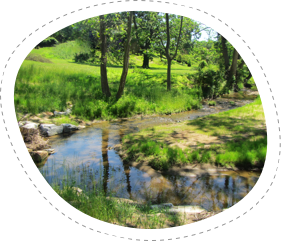
METHODS OF STREAM RESTORATION
When it comes to stream restoration, there are a wide variety of techniques and methods to best protect the land and public infrastructure, reduce erosion, minimize the impact on streambeds, and restore aquatic ecosystems to their natural states. Here are the techniques and methods we use to protect the land and waterways.
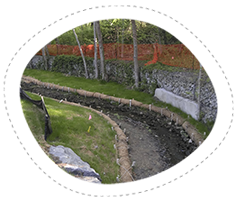 Coir Logs
Coir Logs
This stream restoration technique involves placing rolls of heavy mesh netting, made from coconut fibers, along the banks to hold soil in place, help plants grow, and retain water.
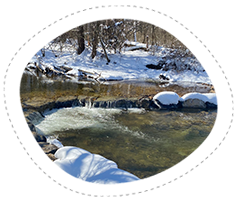 Cross Vanes
Cross Vanes
To build a cross vane, we arrange stones in the shape of a C or V to redirect water away from the stream bank and direct it toward the center of the stream. This process of stream restoration reduces erosion along the bank and provides grade control.
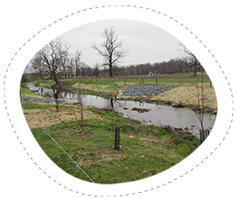 Grading & Planting
Grading & Planting
We grade steep stream banks into a series of sloping steps to dissipate water flow during large rainstorms. Through this process of stream restoration, plants and roots give stability to the banks and keep them in place.
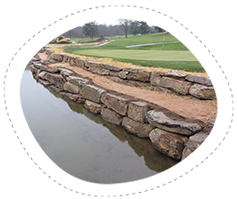 Imbricated Riprap
Imbricated Riprap
This method of stream restoration is mostly used near infrastructure in areas where erosion is most severe. We stack boulders to form a wall, which prevents soil from getting washed into streams during heavy rainstorms.
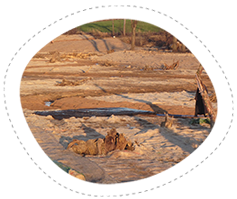 Woody Debris
Woody Debris
Using woody debris in stream restoration projects has the benefit of providing a habitat where various types of fish can live and thrive. Logs and tree limbs are anchored along the banks to reduce erosion and support terraces.
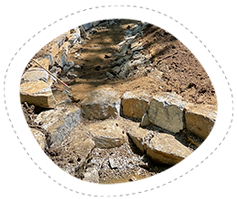 Step Pools
Step Pools
For this type of stream restoration project, we build a series of pools with rocks that form a staircase, which slows the flow of water. Step pools also create habitats for a variety of aquatic life.
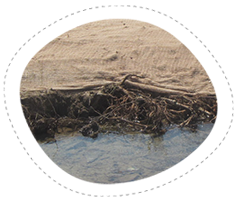 Root Wads
Root Wads
This type of stream restoration project requires anchoring tree stumps along the banks, with their roots facing into the current to slow down the flow of water and provide a habitat for aquatic animals.
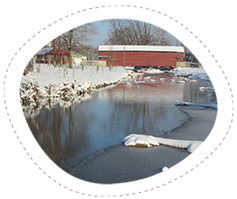 Log Vanes
Log Vanes
To complete this method of stream restoration, we anchor logs in the stream to redirect the flow of water toward the center of the stream and away from eroding banks. This method creates a home for aquatic animals in small pools of water below the vane.
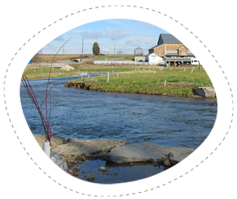 J Hook
J Hook
For this type of stream restoration project, we organize rocks in the shape of a J to move the flow of water away from stream banks affected by erosion, which creates small pools of water and a habitat for aquatic animals.
Coir Logs
This stream restoration technique involves placing rolls of heavy mesh netting, made from coconut fibers, along the banks to hold soil in place, help plants grow, reduce weeds, and retain water.
Cross Vanes
To build a cross vane, we arrange stones in the shape of a C or V to redirect water away from the stream bank and
direct it toward the center of the stream. This process of stream restoration reduces erosion along the bank
and provides grade control.
Grading & Planting
We grade steep stream banks into a series of sloping steps to dissipate water flow during large rainstorms.
Through this process of stream restoration, plants and roots give stability to the banks and keep them in place.
Imbricated Riprap
This method of stream restoration is mostly used near infrastructure in areas where erosion is most severe.
We stack boulders to form a wall, which prevents soil from getting washed into streams during heavy rainstorms.
Woody Debris
Using woody debris in stream restoration projects has the benefit of providing a habitat where various types of fish can live and thrive. Logs and tree limbs are anchored along the banks to reduce erosion and support terraces.
Step Pools
For this type of stream restoration project, we build a series of pools with rocks that form a staircase, which slows the flow of water. Step pools also create habitats for a variety of aquatic life.
Root Wads
This type of stream restoration project requires anchoring tree stumps along the banks, with their roots facing into the current to slow down the flow of water and provide a habitat for aquatic animals.
Log Vanes
To complete this method of stream restoration, we anchor logs in the stream to redirect the flow of water toward the center of the stream and away from eroding banks. This method creates a home for aquatic animals in small pools of water below the vane.
J Hook
For this type of stream restoration project, we organize rocks in the shape of a J to move the flow of water away from stream banks affected by erosion, which creates small pools of water and a habitat for aquatic animals.
OUR CUSTOMER SERVICE
At Flyway, we not only do an excellent job in the field, but our customer service is unmatched. We work hard to meet the needs of our clients and contractors to get the job done right every single time. Our reputation comes from our dedication to excellence and our commitment to quality customer service. We’ve worked with a variety of clients, from government entities to local organizations to private residents. We understand the unique challenges they face, and we pride ourselves on being easy to work with and good at what we do. We value building strong relationships with our customers and communities to create an environment we can all be proud to call home.
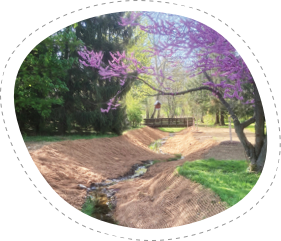
YOUR STREAM RESTORATION PARTNER
Flyway Excavating is honored to partner with you to provide high-quality, environmentally friendly excavation and stream restoration services. With more than three decades of experience, you can count on us to get the job done right.
If you’re interested in learning more about our previous stream restoration work, check out our recent projects . If you’re ready to get started on a water improvement and stream restoration project, contact us today. We look forward to partnering with you.